 Technology
Technology  Technology
Technology  Humans
Humans 10 Everyday Human Behaviors That Are Actually Survival Instincts
 Animals
Animals 10 Animals That Humiliated and Harmed Historical Leaders
 History
History 10 Most Influential Protests in Modern History
 Creepy
Creepy 10 More Representations of Death from Myth, Legend, and Folktale
 Technology
Technology 10 Scientific Breakthroughs of 2025 That’ll Change Everything
 Our World
Our World 10 Ways Icelandic Culture Makes Other Countries Look Boring
 Misconceptions
Misconceptions 10 Common Misconceptions About the Victorian Era
 Mysteries
Mysteries 10 Strange Unexplained Mysteries of 2025
 Miscellaneous
Miscellaneous 10 of History’s Most Bell-Ringing Finishing Moves
 Technology
Technology Top 10 Everyday Tech Buzzwords That Hide a Darker Past
 Humans
Humans 10 Everyday Human Behaviors That Are Actually Survival Instincts
 Animals
Animals 10 Animals That Humiliated and Harmed Historical Leaders
Who's Behind Listverse?

Jamie Frater
Head Editor
Jamie founded Listverse due to an insatiable desire to share fascinating, obscure, and bizarre facts. He has been a guest speaker on numerous national radio and television stations and is a five time published author.
More About Us History
History 10 Most Influential Protests in Modern History
 Creepy
Creepy 10 More Representations of Death from Myth, Legend, and Folktale
 Technology
Technology 10 Scientific Breakthroughs of 2025 That’ll Change Everything
 Our World
Our World 10 Ways Icelandic Culture Makes Other Countries Look Boring
 Misconceptions
Misconceptions 10 Common Misconceptions About the Victorian Era
 Mysteries
Mysteries 10 Strange Unexplained Mysteries of 2025
 Miscellaneous
Miscellaneous 10 of History’s Most Bell-Ringing Finishing Moves
10 Traditions That Are Way Newer Than We Think They Are
We all have traditions, many of which we share collectively as a society. They tie us together from year to year. As we think of many of them as going back generations, we use them to connect us with our heritage. But seemingly long-held traditions often got their start much more recently than you would expect.
Traditions are often invented and then assumed to be much older than they actually are. In fact, some traditions that we hold close as generational events, holiday traditions, or milestones in life didn’t exist even one century ago.
10 Diamond Engagement Rings
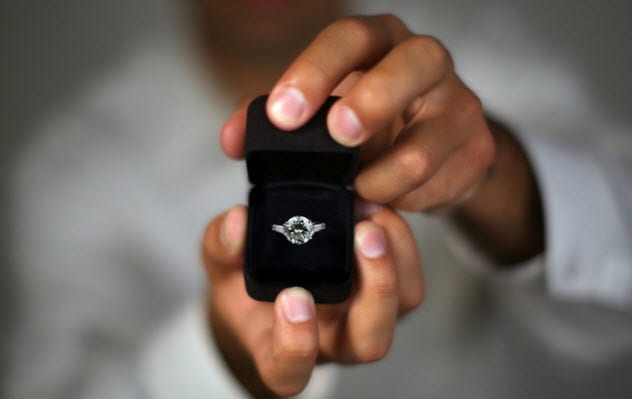
Ah, the old tradition. Getting down on one knee and giving the one you love a diamond ring to show them that you love them and want to be with them forever. Except that this tradition is not old at all and began as a marketing gimmick to increase diamond sales.
That is right. The diamond engagement ring is not some ancient tradition. It’s an invention of advertisers who wanted to increase diamond sales in the 1930s and 1940s.
You see, in the early 20th century, De Beers Consolidated Mines, Ltd. took control of almost the entire supply of the world’s diamonds. As a result, diamonds could skyrocket in price to whatever the firm wanted. The problem? There wasn’t enough demand for diamonds.[1]
To make more money from the endeavor, the company needed something to make people want to spend lots of cash on the previously unattractive diamond. And so the tradition of the modern engagement ring was born. Ads made this common Earth material seem rare and with almost mystical properties of love. Now you have to pay thousands of dollars for a fake tradition because of De Beers.
9 Gender-Specific Toys

Pink is for girls and blue is for boys, right?
Wrong! In fact, gender-specific toys largely only date back to the 1980s. Throughout most of human history, children played with the same general toys and no one gave it much thought.
Then in the mid-1980s, toy catalogs started separating children’s playthings into categories and the divide began. This created the blue and pink toy aisles we know today (or knew until Toys “R” Us closed).[2]
Actually, not everything is as divided by gender today as it once was. Back in the mid-1990s, a lot more products were split into gender-specific advertising campaigns than today. Even the first home computers came out as toys for men. Luckily, things are not that extreme anymore, but we have now created a society where everything from dolls to LEGO bricks to colors has a gender.
8 Birthday Song
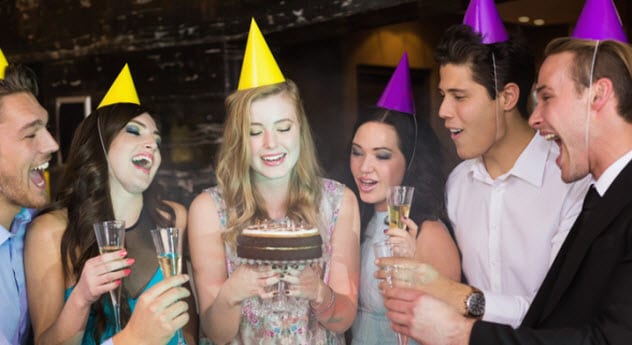
Ever wonder why all your favorite TV shows use strange and different birthday songs? Or why so many restaurants have unique birthday songs that they sing to you with your free dessert?
It is not because they are being creative. Instead, what we all consider to be the definitive birthday song, “Happy Birthday,” was actually written so recently that it just entered the public domain in 2016.[3]
That’s right. The song everyone sings to you every year was only published in the mid-20th century and has been earning money ever since due to its permanent place in US culture. The lyrics are not the original ones, either. But that’s another story.
7 Trick-Or-Treating

Halloween has its origins as a Celtic holiday from the Middle Ages that was reinvented by the Catholic Church and has been celebrated intermittently ever since. But these traditions were usually quite different from those we know today. Throughout most of its history, Halloween was marked by Christian religious celebrations, not dressing up as the undead and other things that would make a priest shudder.
Trick-or-treating originated in the early 1930s. Then it disappeared for 20 years because of a little thing called World War II. Following the war, there were more children than ever before, which allowed for a more childish version of the holiday to take over. Now go get that candy from strangers.[4]
6 Saturdays
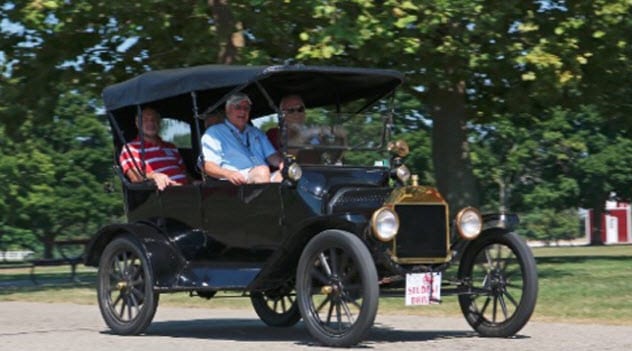
For the majority of the past millennium since Christianity rose to dominance in the Western world, humans have worked a six-day workweek, only taking a break for religious services on Sunday. As labor unions rose to power in the late 19th and early 20th centuries, an extra day off from work was one of the first things they asked for.
And one company gave it to them—the firm run by Henry Ford. This was not a kind gesture on his part. No, it was a move to earn money. So, how did he rake in more money by giving his employees another day off?
With more time off, the workers had time to travel. Therefore, they had more need for cars, putting money right back in Ford’s pocket. His diabolical plan worked so well that it became the standard practice of every American company.[5]
5 Drinking On Saint Patrick’s Day

This isn’t the old tradition? But that’s the whole point, isn’t it? Not in Ireland, it’s not!
Drinking on Saint Patrick’s Day is thought to be a distinctly Irish tradition, but it is not. Up through the 1970s, pubs were often closed on the holiday due to its religious nature in Ireland.
Then, in the late 1970s, drinking became associated with the holiday in Ireland. It spread as a break from Lent to get you through to Easter, despite having already been the case in America for decades. Drinking on Saint Patrick’s Day is actually an American tradition that spread to Ireland later on.[6]
4 Everything About Thanksgiving

Okay, let us burst your bubble. Almost everything you know about Thanksgiving is wrong. There was tons of venison. But there was probably no turkey, no pumpkin pie, no cranberry sauce, and no potatoes.[7]
Also, all of that is assuming that anything like our idea of the first Thanksgiving even happened. Almost everything about this holiday was invented centuries after the fact, and it likely bears little resemblance to what the Pilgrims did to celebrate their harvest.
3 Restaurants
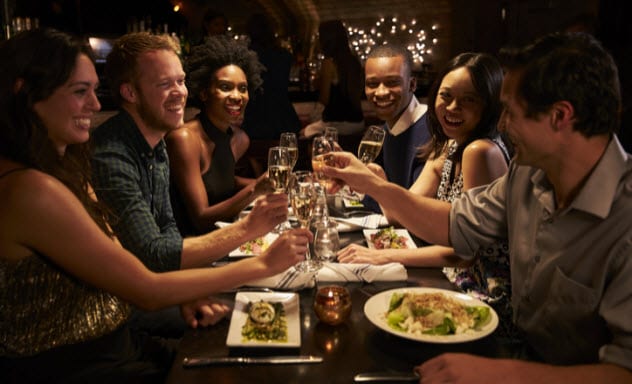
Americans eat out so often that they assume it’s always been like this. Restaurants have always existed to feed the masses, right? Well, actually the idea of restaurants only dates back to the French Revolution.
After the fall of most of the wealthy in France, cooks and servants found themselves unemployed because no one was rich enough to hire a private chef. So they banded together to make mass meals for the common people. It was discovered that you could make money doing this, and the concept spread to the level we know today.[8]
2 Smiling In Photos
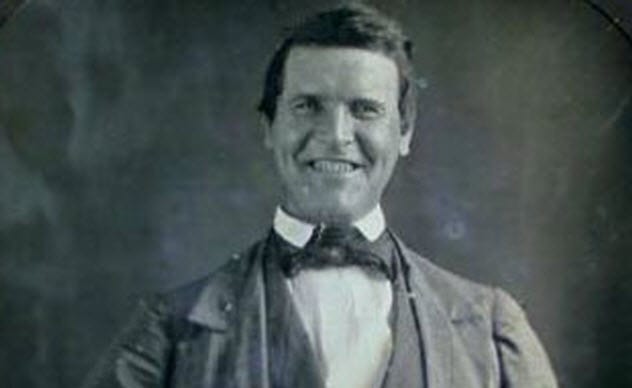
Photography is about to enter its second century, and things have changed a lot in that time. In the early days, no one would say “cheese” and tell you to smile as that was not socially acceptable in photos.
No one really knows why, but there are a few theories. It could be that it was a continuance of the traditions of painted portraits. It could be due to the time requirement for taking a photo. Or it could just have been that people had bad teeth.
Whatever the reason, smiling in photos is a relatively modern trend despite its prominence.[9]
1 Santa

Although Saint Nicholas has been around for centuries, what we think of as Santa is a very recent invention. For example, his red suit didn’t appear as red until 1932. At that time, a black-and-white image was colored red for an advertisement in order to use the character to promote a product.
What product permanently changed Christmas forever and created a beloved childhood character as we know him today?[10]
Coca-Cola. Yep, you heard us right. Coca-Cola used Santa in an ad in a red suit to promote themselves, and it just kinda stuck.
Check out my website at www.themeparksandentertainment.com
Read about bizarre traditions on 10 Strange University Traditions and 10 Strange Christmas Traditions From The Victorian Era.








